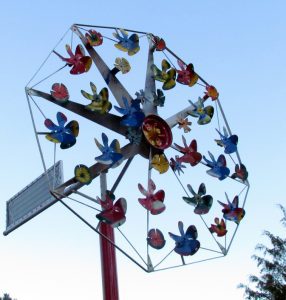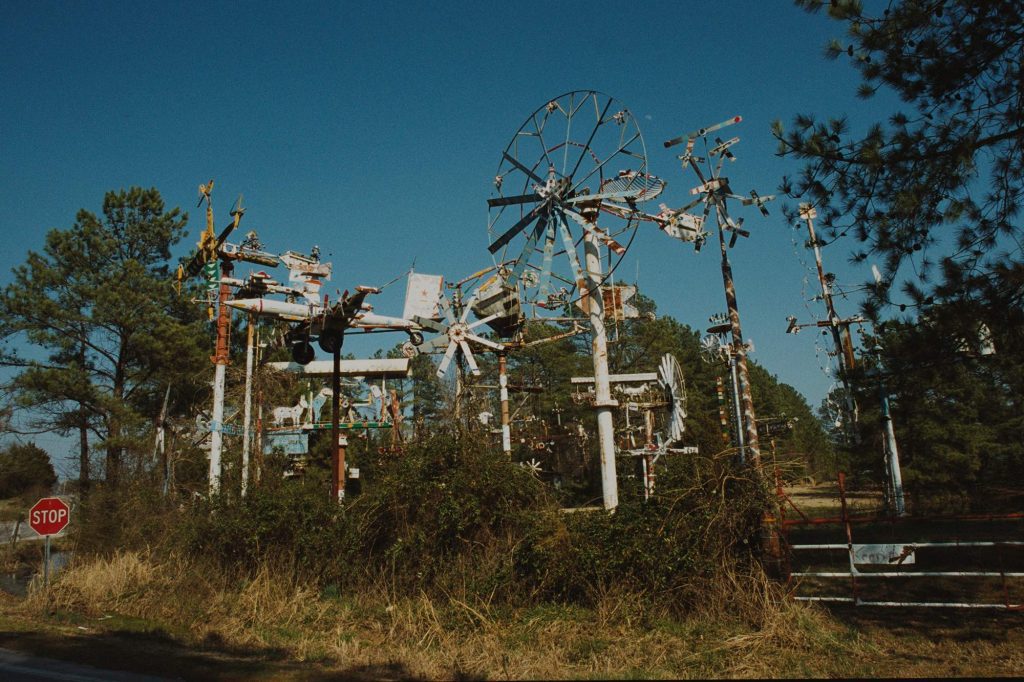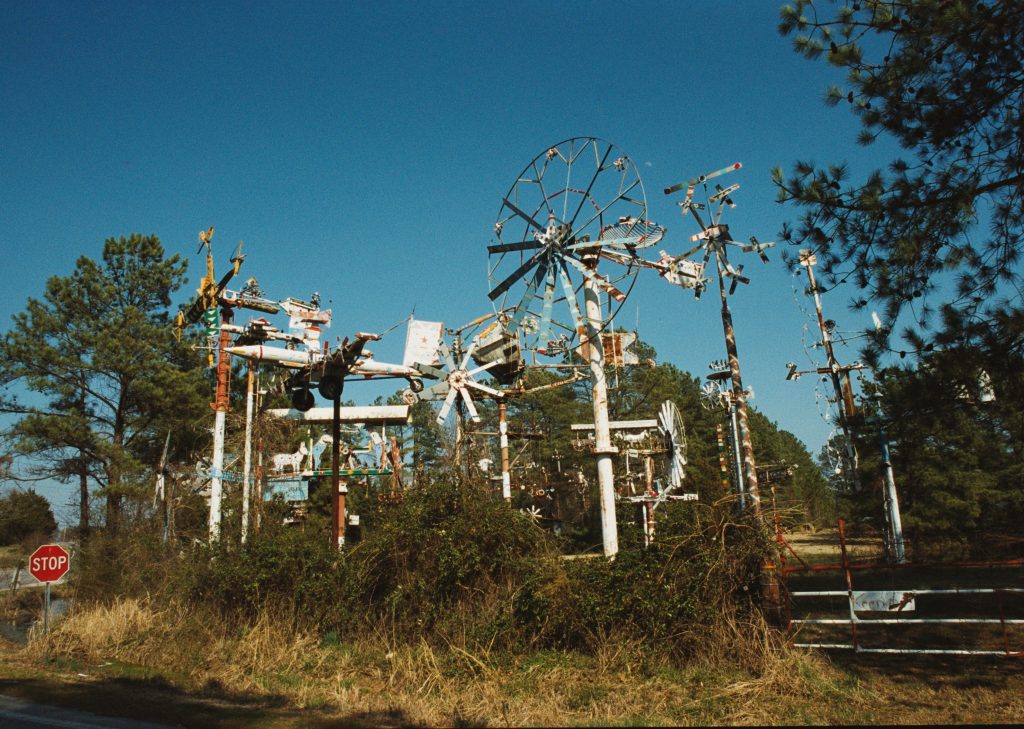The whirligig, an object that spins or twirls, may have started as a farmer’s weathervane, but it evolved into a recognized category of American folk art. Simply put, a whirligig is a weathervane that does something other than rotate into a position indicating wind direction.
Even the most primitive human societies had reason to track wind direction. In early America, farmers used wind-driven contraptions to establish wind direction and weather, important things to know when planning to plant a field of crops. Since then, the basic weathervane morphed into those whimsical mechanical creations that we know today. During the long, cold winters of the 1800s, creativity went to work, and a new type of “weathervane” appeared in the Appalachians; it was called a whirligig.
The American version of the wind-driven whirligig probably originated with immigrants from the United Kingdom, as whirligigs are mentioned in early American colonial times. From colonial America through westward expansion and the industrial revolution, the whirligig developed into a truly American folk art. Even though it is not fully known how the American version evolved, we know that George Washington brought “whilagigs’’ home from the Revolutionary War. Washington Irving’s “The Legend of Sleepy Hollow,” first published in 1820, describes “a little wooden warrior who, armed with a sword in each hand, was most valiantly fighting the wind on the pinnacle of the barn.”
By the mid-18th century, weathervanes had evolved to include free moving “wings.” These could be human arms, pitchforks, spoons or virtually any type of implement. By the latter half of the 19th century, constructing wind-driven whirligigs had become a pastime and an art form. Whittlers, especially those in rural areas, used mostly scrap to create mechanisms producing both motion and sound. Sadly, few very early wind-driven whirligigs survive, due to their exposure to the weather and fragile nature.
The period between 1880 and 1900 saw the rapid spread of whirligigs across the U.S. Whirligig production, however, seemed for the most part to stay centered in the southern Appalachians. Mountain craftsmen continued to produce whirligigs into the 1930s, since they were a source of cash, especially during the Depression. Many of those we see today are from this period.
Since their makers did not typically sign whirligigs, those that do carry signatures from folk artists are highly collectible, but their value as folk art has been uneven. Although a signed and dated 19th-century polychrome carved pine and copper band figure whirligig in excellent condition recently sold at auction for $8,000, many early 20th-century whirligigs can still be found for under $200.

Vollis Simpsons work can be viewed in Whirlgig Park in Wilson, N.C.
“The Junkyard Poet,” Vollis Simpson, whose monumental whirligigs were adopted by North Carolina as the official folk art of the state, exemplifies whirligigs as art. Simpson, who died in 2013 at 94, never set out to be an artist, entering the art world at an age when most people retire. A mechanic repairing farm machinery, he turned his mechanical abilities to the creation of large-scale, wind-driven kinetic metal sculptures. Simpson’s whirligigs have been called “roadside gifts to the eye and spirit.” One of his works is the signature piece on display outside the American Visionary Art Museum in Baltimore. Several Simpson wind machines delighted tourists at the 1996 Olympic Games in Atlanta. Simpson called them windmills, but they are really just huge whirligigs, some as tall as 50 feet.
Even though certain rarified examples are featured in the collections of folk art museums and serious collectors, old whirligigs are still found in many a garden, designed to keep garden pests away and to make young and old passersby smile.


